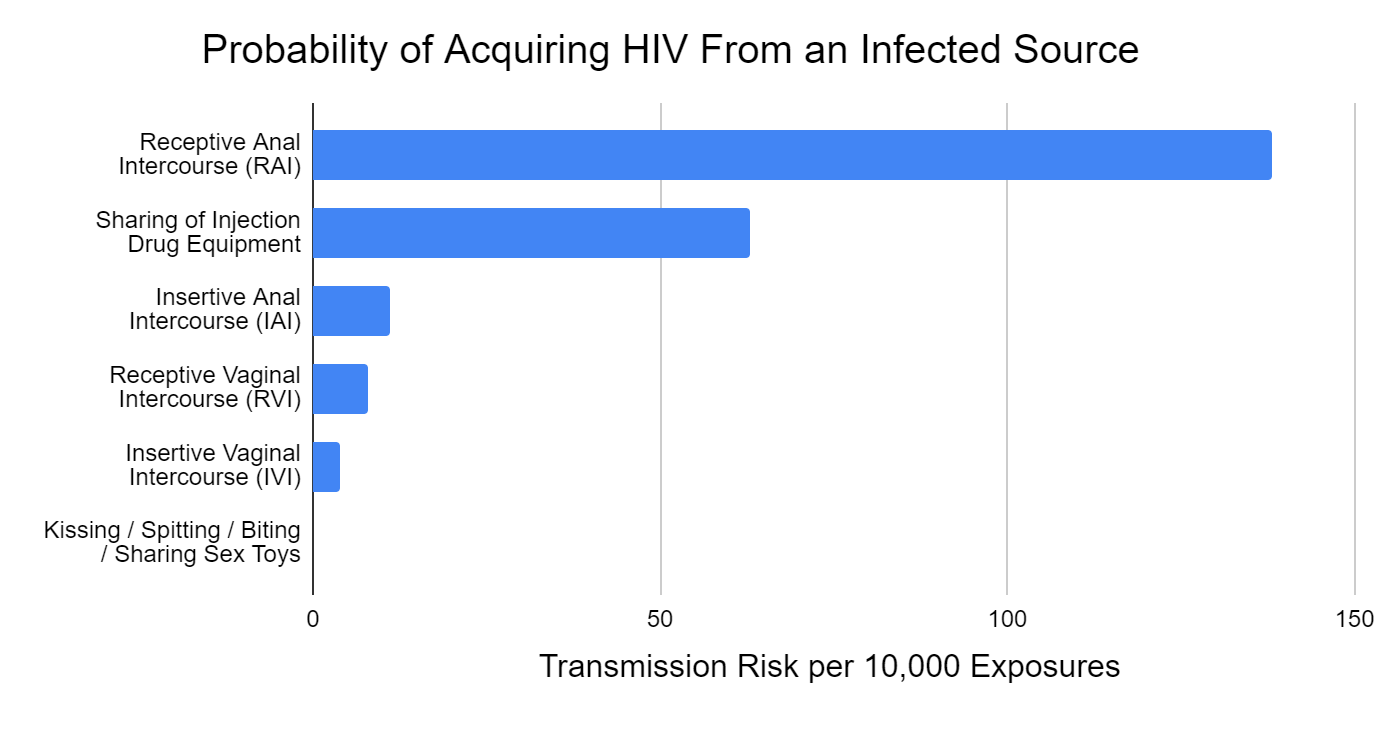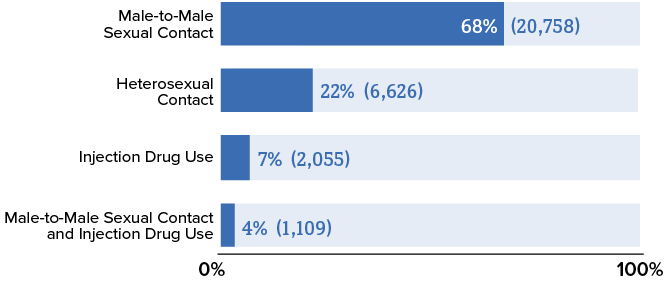PrEP Provider Toolkit
PrEP Provider Toolkit
Basics of HIV
Transmission risk factors
To truly understand and appreciate the potential of PrEP, it is worthwhile to briefly review the disease it prevents. HIV is a retroviral infection that specifically attacks the CD4 cells in the immune system.
Transmission of HIV typically occurs through contact with blood or fluids from the rectum, penis, or vagina. Additionally, HIV can be transmitted from a mother to her child perinatally or through breastfeeding. Exposure of HIV to damaged mucosal tissue or directly into the bloodstream is required for transmission. Exposure to HIV on intact skin does not pose a risk, nor do acts such as hugging, kissing, or sharing utensils.
Figure 1 depicts the estimated likelihood of acquiring HIV from an infected source based on the type of exposure. Note that the second highest risk factor occurs among people who inject drugs (PWIDs), which is a population of rising concern. For further information about HIV transmission: https://www.cdc.gov/hiv/basics/transmission.html
Click for image for full size view
Click the title of the figure to view source.
Figure 1. - Estimated Probability of Acquiring HIV from an Infected Source by Exposure Type
Source: Patel, Borkowf, C. B., Brooks, J. T., Lasry, A., Lansky, A., & Mermin, J. (2014). Estimating per-act HIV transmission risk: a systematic review. AIDS (London), 28(10), 1509–1519. https://doi.org/10.1097/QAD.0000000000000298
Pretty, Anderson, G. S., & Sweet, D. J. (1999). Human bites and the risk of human immunodeficiency virus transmission. The American Journal of Forensic Medicine and Pathology, 20(3), 232–239. https://doi.org/10.1097/00000433-199909000-00003
Factors contributing to HIV transmission are fundamentally important to understand as it helps discern which patients are at the highest risk and how to protect them best.
Anal sex or sex under the influence of drugs and alcohol has a higher likelihood of damaging the protective mucosal layer, which facilitates HIV transmission. Local inflammation caused by sexually transmitted infections (STI) also decreases the integrity of the mucosal lining. This partly explains why groups such as men who have sex with men (MSM) have higher rates of HIV transmission (Figure 2).
The CDC has a helpful tool that estimates the risk of sexually transmitted HIV based on various factors. It provides a powerful graphic that can be used with patients during visits to improve their self-perceived risk: https://hivrisk.cdc.gov/risk-estimator-tool/#-mb|iai
Figure 2. - New HIV Diagnoses in the US by Transmission Category, 2020
Source: Centers for Disease Control and Prevention. (2022). Diagnoses of HIV infection in the United States and dependent areas, 2020. U.S. Department of Health and Human Services. https://www.cdc.gov/hiv/pdf/library/reports/surveillance/cdc-hiv-surveillance-report-2020-updated-vol-33.pdf


